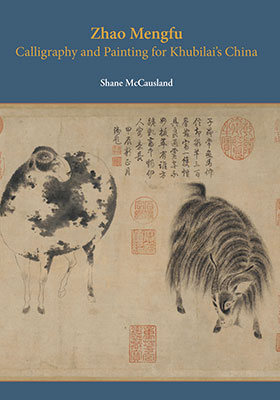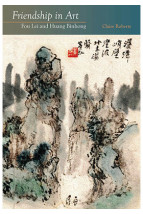Zhao Mengfu
Calligraphy and Painting for Khubilai’s China
(趙孟頫:中國忽必烈時代的書法與繪畫)
ISBN : 978-988-8028-57-3
April 2011
460 pages, 7″ x 10″, 152 color illus.
- HK$350.00
Ebooks
Zhao Mengfu has enormous significance for Chinese art history. This work presents a new, synthetic portrait of the artist’s development from the 1280s to his death in 1322, and evaluates his pivotal role in the social-political context in Yuan China as well as the development of the artist’s self-consciousness. Shane McCausland’s study features detailed interpretation of pictorial forms in light of historical changes, and close readings of critical colophons, many appended to artworks, but neglected as visual sources. These readings are meant to stimulate visual analysis of the oeuvre as well as debate about the use of Tang (618–907) and other period modes as models for the ‘Yuan renaissance’.
The book challenges stereotypes portraying Zhao Mengfu as a traitor or careerist. The historical background of dynastic change and Mongol rule is treated in a revisionist manner that aims to contextualize the traditional Chinese hostility towards Zhao Mengfu as a Yuan scholar-official. The concern here is for his development, in the context of Mongol rule, as a Chinese scholar-artist. This book is a must for scholars, curators and other specialists in Chinese painting and calligraphy, especially those focusing on Yuan dynasty and literati painting.
“Shane McCausland’s study of Zhao Mengfu as a calligrapher and painter is a pleasure to read and a major contribution to the field of Chinese art studies. It is a landmark not only because it is the first monograph in a Western language on one of the most significant artists in world history, but also because of McCausland’s great art historical sensitivity and sinological expertise.” —Robert E. Harrist, Jr., Columbia University
“This book brilliantly illuminates the art and life of one of China’s most controversial artists. Shane McCausland has produced a searching examination of the entire oeuvre of Zhao Mengfu, whose passionate study and practice of art both transformed art history and sustained him through the difficult era in which he lived.” —Richard M. Barnhart, Yale University



